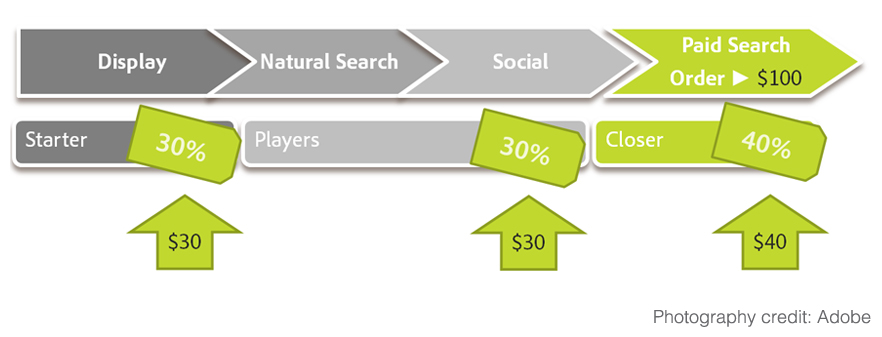Why Every Marketer Needs Attribution Models
| 7 Feb 2014
|

While the array of digital channels has allowed companies to target audiences easily, it has created difficulties for brands when they need to evaluate the effectiveness of each digital outlet. To pinpoint each channel’s impact to the final sale or business objective, marketers need to utilize attribution models. Here are 3 reasons why every marketer needs to use attribution models:
-
See the overall picture
Digital marketing doesn’t work in a vacuum. It can’t woo customers with a single display ad and convince them to buy products or services immediately. Customers must be exposed to a company several times through different digital channels before they make a purchase decision. To determine each channel’s effectiveness to the final sale, marketers need to create attribution models. An attribution model identifies whether an ad has “assisted” a sale or won a sale. Moreover, it shows how long it took for a customer to make a purchase after getting exposed to an ad for the first time. For instance, a customer may see a display ad first before joining a Facebook group, signing to a newsletter, and buying a product. This process can take several months. By creating attribution models, marketers can see the entire buying cycle and evaluate each channel’s contribution to the final sale. In this example, while the initial display ads may not have converted any sales, they boosted brand awareness, which in turn assisted with converting sales in the long-run. -
Optimize proper channels
By identifying the impact of each digital channel, you can optimize it properly. For instance, if you realize that display ads play more of an assist role than a conversion role, you can focus on creating general display ads to get consumers’ attention and increase brand exposure. If you’re a Vancouver-based hotel, you would create general ads such “One of the Largest Hotels in Downtown Vancouver” or “Located at the Centre of Downtown Vancouver” to get your brand out there and gain exposure. Simultaneously, if you realize that Facebook is the best channel to entice travelers to book a room at your hotel, you can showcase promotions on Facebook such as “3 Nights at the Heart of Downtown Vancouver for Only $299” to prompt purchase intention. These tactics help optimize your digital programs for specific purposes and generate maximum results. -
Develop an integrated digital marketing strategy
Generally, it takes consumers several points of contact before they place you in their consideration sets and make a purchase. This is why using an integrated digital marketing strategy is important: it helps you strategize how you should approach your audiences and develop bonds. According to the mere exposure effect theory, consumers tend to develop a more positive perspective toward brands they see frequently and are familiar with.By using attribution models to define each digital channel’s role, you can integrate channels based on their strengths to create a comprehensive digital marketing plan that allows you to push consumers more effectively through the sales funnel.One key benefit of digital marketing is its ability to measure performance precisely. By adding attribution models to the equation, you can determine with even more clarity how each digital channel contributes to the overall business objective and how you should leverage it further.If you want assistance with setting up attribution models, please contact us and we’ll be more than happy to help!


